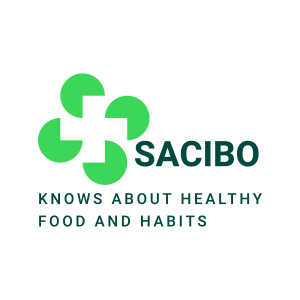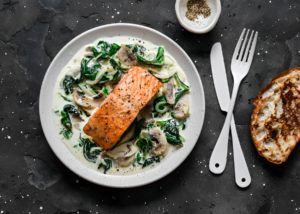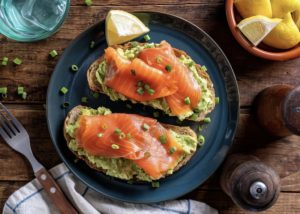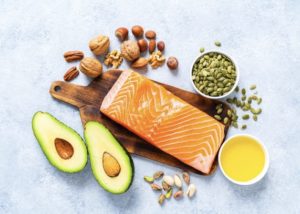- Home
- /
- Weight Reduction
- /
- Gene of Over Weight...
- /
- The gene of overweight...
A bit of scientific language
The ADRB2 gene, also known as the gene of overweight people, in the science – the adrenergic beta-2 receptor gene, plays a role in regulating the body’s response to adrenaline and other catecholamines. Variations in the ADRB2 gene have been associated with various physiological and pathological conditions, including overweight and obesity.
Several single nucleotide polymorphisms (SNPs) in the ADRB2 gene have been identified and studied for their potential influence on body weight and overweight or obesity risk. One of the most extensively studied SNPs is rs1042713, also known as Arg16Gly. This SNP results in an amino acid change in the beta-2 adrenergic receptor, which affects its function.
There are 3 options
Polymorphism GG
1. GG polymorphism is a well-known polymorphism in the ADRB2 gene referred to as the rs1042713 polymorphism, which is commonly known as Arg16Gly. In this polymorphism, the nucleotide at position 46 of the ADRB2 gene is altered. The “G” allele represents the variant allele, and the “A” allele represents the normal or wild-type allele.
Therefore, an individual with the genotype “GG” for the rs1042713 polymorphism has two copies of the variant “G” allele at that specific position in the ADRB2 gene.
This polymorphism has been studied in various populations and has been associated with differences in receptor function, response to certain medications, and potential implications for various health conditions. It is one of the commonly investigated polymorphisms in the ADRB2 gene.
Polymorphism CG
2. There is one more polymorphism in the ADRB2 gene known as rs1042713 (Arg16Gly), which involves a nucleotide change from cytosine (C) to guanine (G) at position 46. This results in two possible genotypes: CC and CG.
Individuals with the CG genotype have one copy of the C allele and one copy of the G allele at the rs1042713 position in the ADRB2 gene.
The rs1042713 polymorphism has been studied for its potential associations with various health outcomes, including response to medications, metabolic responses, and disease risk. It is one of the commonly investigated polymorphisms in the ADRB2 gene.
Polimorphism CC
3. CC is the combination of without polymorphism for the ADRB2 gene involving the nucleotide change from cytosine (C) to cytosine (C) at a specific position is not considered a polymorphism, as it represents the wild-type or normal allele without any variation.
How does it matters?
Research has suggested that individuals carrying the Gly16 variant of the ADRB2 gene (GG) may have a higher risk of overweight compared to those with the Arg16 variant (CC). The Gly16 variant has been associated with a reduced ability of the beta-2 adrenergic receptor to respond to catecholamines, such as adrenaline. This impaired response may lead to decreased lipolysis (breakdown of stored fat) and reduced energy expenditure, which could contribute to weight gain and the development of overweight and obesity.
How many people have such polymorphisms?
The frequency of the GG, CC, and CG polymorphisms in the ADRB2 gene can vary among different populations and ethnicities. Here is a general overview of the prevalence of these polymorphisms:
- GG Polymorphism: approximately 15 %
- CC combination: about 33%
- CG Polymorphism: around 52%
It’s important to note that the prevalence of these polymorphisms can differ across populations, ethnicities, and geographic regions. Additionally, the impact and implications of these polymorphisms can vary among individuals, and their associations with specific health conditions or traits are still an area of ongoing research.
How can overweight occur?
Glycogen plays a role in the context of lipolysis and energy metabolism. Glycogen is the stored form of glucose in the body, primarily found in the liver and muscles. It serves as a readily available energy source that can be quickly broken down into glucose when needed.
During periods of increased energy demand, such as physical activity, the body relies on various energy sources to fuel its needs. Initially, the body utilizes glycogen stores to meet the immediate energy requirements. Glycogen is broken down into glucose through a process called glycogenolysis, which is regulated by enzymes and hormonal signals.
When glycogen stores are depleted, the body may shift to alternative energy sources, such as fat. This is where lipolysis becomes relevant. Lipolysis involves the breakdown of stored fat (triglycerides) into fatty acids and glycerol, which can be used as an energy source by various tissues, including muscles.
The impaired response of the beta-2 adrenergic receptor associated with the GG polymorphism in the ADRB2 gene may impact the balance between glycogen utilization and lipolysis. With reduced beta-2 adrenergic receptor activity, the body may have a decreased ability to effectively stimulate lipolysis and utilize stored fat as an energy source.
As a result, individuals with the CG and GG polymorphism may rely more on glycogen stores during energy-demanding activities instead of efficiently mobilizing and utilizing stored fat. This can have implications for weight management, overall energy metabolism and preventing of overweight.
Higher risk doesn’t mean that overweight will happen
The GG polymorphism in the ADRB2 gene, as mentioned earlier, has been associated with a potentially higher risk of overweight and obesity and insulin resistance in some studies. However, it’s important to note that genetics is just one factor among many that can contribute to weight management and overall health.
Weight management is influenced by a combination of factors, including other genes, lifestyle choices, diet, physical activity, stress levels, and environmental factors. While certain genetic variations may make it more challenging for some individuals to maintain a healthy weight, lifestyle choices can still have a significant impact.
What to eat to prevent overweight?
High protein and low carbohydrate diet can help. Here’s how:
- Increased thermogenesis: Protein has a higher thermic effect of food compared to carbohydrates and fats, meaning it requires more energy to digest and metabolize. This increased thermogenesis can contribute to higher energy expenditure and potentially enhance fat burning.
- Satiety and appetite control: Protein is known to promote feelings of fullness and satiety, which can help reduce overall calorie intake and prevent overeating. By keeping you satisfied for longer periods, a high protein diet may indirectly support a calorie deficit, leading to the utilization of stored fat for energy.
- Preserving lean muscle mass: Adequate protein intake is crucial for preserving lean muscle mass during weight loss. When following a calorie-restricted diet, there’s a risk of losing muscle along with fat. However, consuming sufficient protein can help minimize muscle loss and preserve metabolic rate, as well as support lipolysis.
- Blood sugar control: A low carbohydrate diet restricts the intake of high glycemic index carbohydrates, which can lead to spikes in blood sugar levels and subsequent insulin release. By managing blood sugar levels, a low carbohydrate diet may help optimize insulin sensitivity and promote more stable energy levels, potentially supporting lipolysis.
- Ketosis: A very low carbohydrate diet, often referred to as a ketogenic diet, can induce a metabolic state called ketosis. In ketosis, the body primarily relies on fat for fuel, as carbohydrate stores are depleted. This can potentially enhance lipolysis and promote fat burning.
When to eat to avoid overweight?
It’s important to note that while the timing of lipolysis is not solely dependent on specific hours of the day and Lipolysis occurs throughout the day and night, the main part of it occurs at night.
Therefore, A low carbohydrate dinner can be a strategy to support lipolysis,
Moreover A sustainable and balanced approach to nutrition, incorporating a variety of nutrient-dense foods, regular physical activity, and managing overall energy balance, is key to long-term weight management and overall health.
Of course, individual responses to dietary approaches can vary. What works for one person may not work for another, and different factors such as genetics, activity levels, and overall health should be considered. Consulting with a registered dietitian or healthcare professional can provide personalized guidance and help develop a dietary plan that aligns with your specific needs and goals.
If you have further questions
If you have any further questions or concerns regarding the impact of gene polymorphisms, such as those in the ADRB2 gene, on your weight management or nutritional needs, I strongly encourage you to seek personalized guidance from a qualified nutritionist. While the information provided in this article can offer valuable insights, it is important to remember that everyone’s nutritional requirements and genetic makeup are unique.
As a nutritionist, I can provide you with individualized recommendations based on a thorough assessment of your specific genetic profile, health history, lifestyle, and goals. By considering these factors, I can develop a personalized nutrition plan that is tailored to your needs, optimizing your chances for success in achieving your weight management and overall health goals.
By working with a nutritionist, you can gain a deeper understanding of how your genetic makeup may influence your body’s response to certain nutrients and dietary patterns. A nutritionist can guide you in making informed decisions about your food choices, portion sizes, meal timing, and overall dietary approach to support your weight management efforts.
To schedule an appointment or to learn more about how personalized nutrition guidance can benefit you, please don’t hesitate to contact me. Together, we can develop a comprehensive plan that takes into account your genetic background and helps you achieve long-term success in maintaining a healthy weight and optimizing your overall well-being.
To schedule an appointment write here.
































































0 Comments